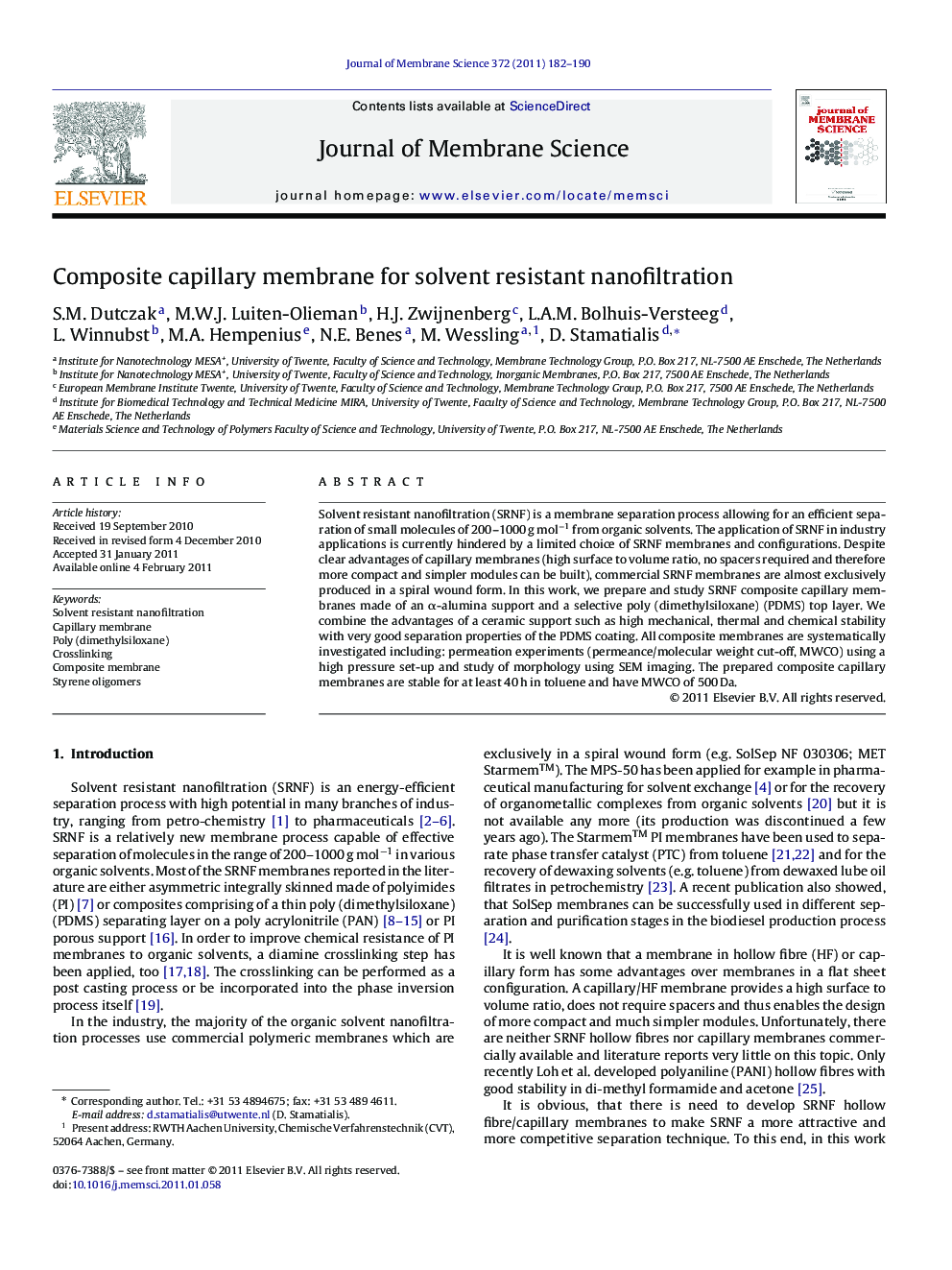| Article ID | Journal | Published Year | Pages | File Type |
|---|---|---|---|---|
| 635463 | Journal of Membrane Science | 2011 | 9 Pages |
Solvent resistant nanofiltration (SRNF) is a membrane separation process allowing for an efficient separation of small molecules of 200–1000 g mol−1 from organic solvents. The application of SRNF in industry applications is currently hindered by a limited choice of SRNF membranes and configurations. Despite clear advantages of capillary membranes (high surface to volume ratio, no spacers required and therefore more compact and simpler modules can be built), commercial SRNF membranes are almost exclusively produced in a spiral wound form. In this work, we prepare and study SRNF composite capillary membranes made of an α-alumina support and a selective poly (dimethylsiloxane) (PDMS) top layer. We combine the advantages of a ceramic support such as high mechanical, thermal and chemical stability with very good separation properties of the PDMS coating. All composite membranes are systematically investigated including: permeation experiments (permeance/molecular weight cut-off, MWCO) using a high pressure set-up and study of morphology using SEM imaging. The prepared composite capillary membranes are stable for at least 40 h in toluene and have MWCO of 500 Da.
Research highlights► Solvent resistant nanofiltration membranes from α-alumina/poly(dimethylsiloxane). ► Ceramic support of high mechanical/chemical stability combined with PDMS separation properties. ► Membrane has toluene flux of 1.6 ± 0.1 l m−2 h−1 bar−1 and MWCO = 500 Da in toluene.
